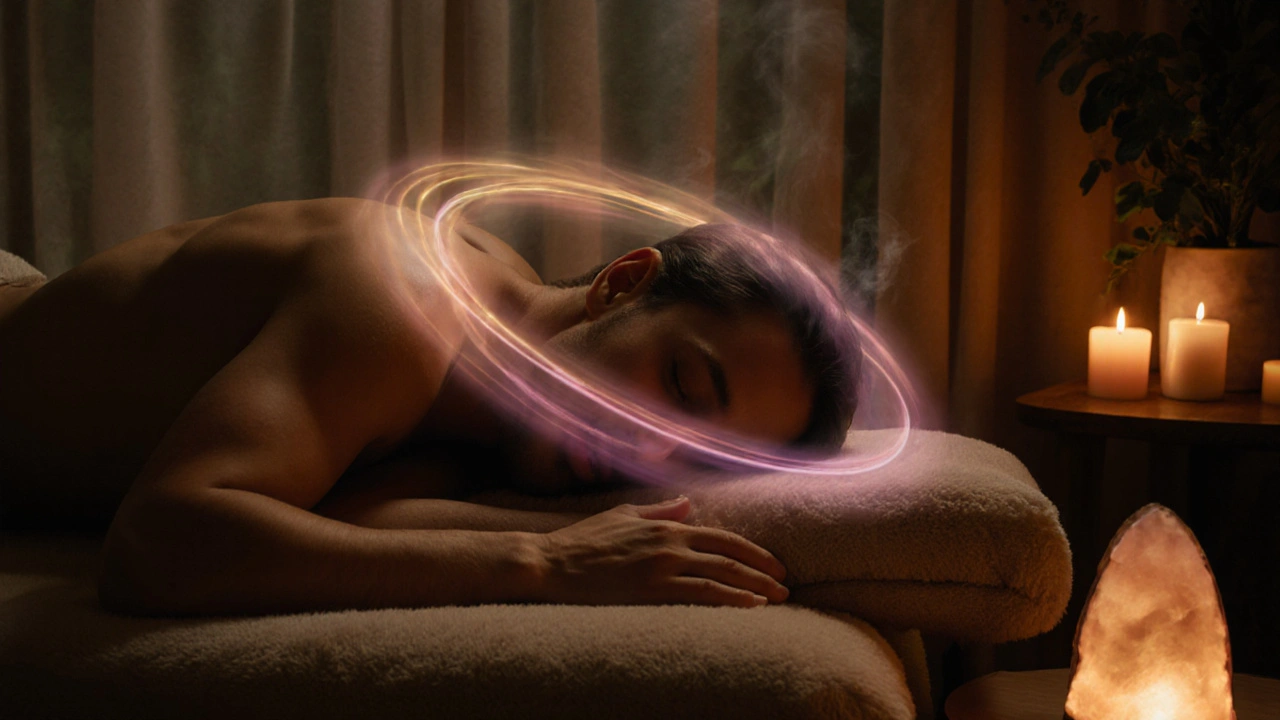Oxytocin Release and the Power of Massage
When talking about Oxytocin Release, the process where the body secretes the bonding hormone oxytocin in response to physical touch, warmth, and relaxation. Also known as the "cuddle hormone," it helps lower cortisol, improve mood, and deepen social connections. If you’ve ever felt a wave of calm after a good massage, that’s oxytocin at work.
Massage therapy is a direct route to triggering this hormonal boost. Massage Therapy, the practice of manipulating soft tissue to relieve tension, improve circulation, and promote relaxation has been shown in studies to increase oxytocin levels within minutes. Different techniques—like Swedish strokes, firm pressure, or rhythmic kneading—activate skin receptors that signal the brain to release the hormone. Among these, Deep Tissue Massage, a focused style that targets deeper muscle layers and connective tissue is especially effective because it combines sustained pressure with a heightened sense of safety, both key triggers for oxytocin.
Why Oxytocin Matters for Mental Health
When oxytocin floods the bloodstream, it doesn’t just make you feel good; it also supports mental health. Increased oxytocin correlates with reduced anxiety, lower depressive symptoms, and better stress resilience. This hormone interacts with the limbic system, the brain region that regulates emotions, helping to calm the fight‑or‑flight response. In practical terms, regular sessions of massage can become a natural adjunct to therapy for people dealing with chronic stress or mood disorders. By pairing rhythmic touch with a calm environment, you create a feedback loop where oxytocin reduces cortisol, and lower cortisol opens the door for even more oxytocin release.
Stress reduction is another major benefit that ties back to oxytocin. When the nervous system shifts from sympathetic (stress) to parasympathetic (rest) mode, oxytocin levels rise, prompting heart‑rate variability and deeper breathing. Techniques like hot stone massage or lymphatic drainage add extra warmth and gentle movement, amplifying this shift. The heat from stones relaxes muscles and opens pores, while the gentle drainage encourages fluid movement, both of which signal the body that it’s safe—an essential condition for oxytocin to flow.
For anyone looking to maximize these effects, a few practical tips help. First, communicate your comfort level with your therapist; optimum pressure varies per person, and feeling safe is crucial. Second, choose a session length of at least 60 minutes; research shows that oxytocin peaks after sustained contact rather than quick touch. Third, incorporate aromatherapy or soft music—both have been shown to enhance the hormonal response. Finally, stay hydrated after the session; it helps flush out metabolic waste and supports overall recovery.
All of these elements—technique, duration, environment, and post‑session care—work together to create a potent oxytocin‑boosting experience. Whether you’re seeking relief from daily pressure, a natural mood lift, or simply a deeper connection to your own body, understanding how oxytocin release ties into massage can guide you toward the right therapist and the most effective treatment.
Below you’ll find a curated list of articles that dive deeper into specific massage styles, scientific studies on hormone response, and step‑by‑step guides to prepare for your next session. Explore the collection to see how each technique can fine‑tune your oxytocin levels and improve overall wellbeing.
The Science Behind the Perfect Couples Massage
Explore the hormonal, nervous‑system, and technique secrets that make a couples massage truly perfect, plus a step‑by‑step home guide.
VIEW MORE
